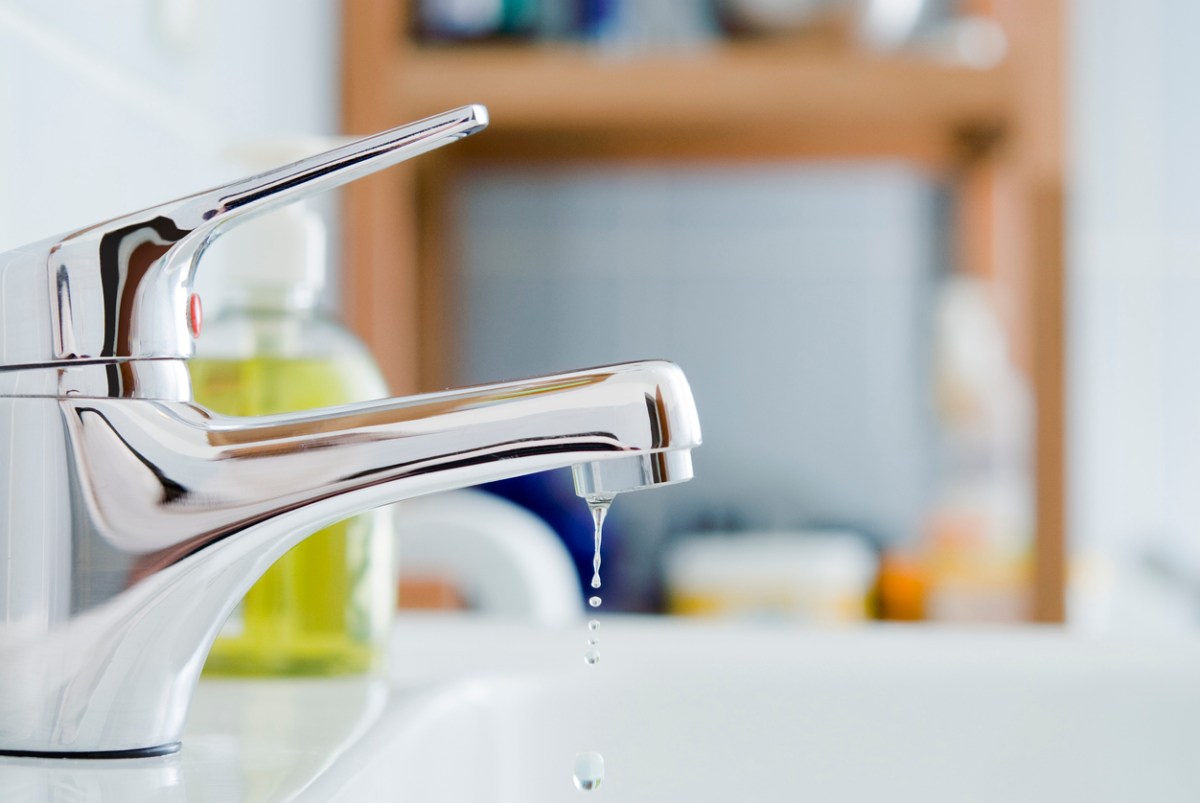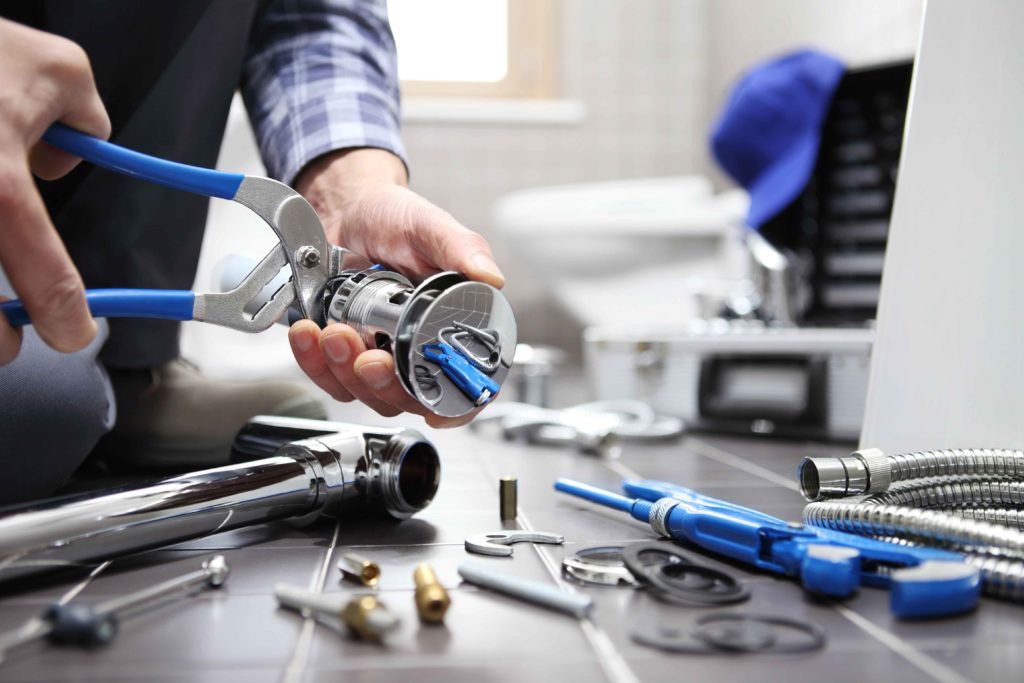Just about everyone may have his or her own opinion involving How to Fix a Dripping or Leaky Faucet .

Trickling taps may look like a small aggravation, but their influence surpasses just the annoyance of the noise. From wasting water to incurring unnecessary financial prices and health threats, disregarding a trickling faucet can cause different effects. In this short article, we'll explore why it's crucial to address this usual household problem promptly and effectively.
Waste of Water
Ecological Influence
Trickling faucets contribute dramatically to water wastefulness. According to the Environmental Protection Agency (EPA), a solitary faucet trickling at one drip per secondly can throw away more than 3,000 gallons of water annually. This not just pressures water sources yet likewise affects ecosystems and wild animals based on them.
Step-by-Step Guide to Dealing With a Dripping Faucet
Devices Needed
Before trying to fix a trickling faucet, collect the necessary tools, consisting of an adjustable wrench, screwdrivers, replacement components (such as washers or cartridges), and plumber's tape.
Usual Tap Issues and Their Solutions
Determine the sort of faucet and the particular concern causing the drip. Common issues consist of worn-out washing machines, rusty shutoff seats, or malfunctioning O-rings. Refer to manufacturer guidelines or online tutorials for detailed advice on repair work.
Financial Costs
Increased Water Bills
Beyond the ecological influence, dripping faucets can inflate water expenses considerably. The built up waste over time converts into greater energy expenses, which could have been stayed clear of with prompt repair services.
Prospective Property Damage
Additionally, long term trickling can lead to damage to fixtures and surfaces bordering the faucet. Water accumulation can cause discoloration, deterioration, and also architectural concerns if left neglected, causing extra repair service expenses.
Health Concerns
Mold And Mildew and Mold Development
The constant visibility of moisture from a dripping tap creates a perfect setting for mold and mildew and mold growth. These fungi not only endanger indoor air top quality but likewise posture health and wellness threats, especially for people with respiratory conditions or allergic reactions.
Waterborne Diseases
Stagnant water in leaking taps can become a breeding ground for microorganisms and other pathogens, increasing the risk of waterborne conditions. Impurities such as Legionella germs flourish in stagnant water, possibly causing major illnesses when consumed or inhaled.
Do it yourself vs. Expert Repair
Advantages and disadvantages of Do It Yourself Repair Service
While some may try to fix a trickling faucet themselves, do it yourself repairs include their own collection of challenges. Without correct knowledge and tools, do it yourself attempts can worsen the concern or bring about insufficient repairs, lengthening the problem.
Benefits of Hiring a Professional Plumber
Hiring an expert plumber guarantees that the underlying reason for the leaking tap is addressed effectively. Plumbings possess the proficiency and tools to detect and repair faucet problems successfully, conserving time and minimizing the risk of additional damages.
Ecological Duty
Specific Payment to Preservation
Taking responsibility for fixing dripping faucets aligns with broader efforts toward water conservation and environmental sustainability. Every individual's activities jointly make a substantial effect on protecting precious sources.
Lasting Living Practices
By prioritizing prompt repairs and taking on water-saving routines, individuals contribute to lasting living methods that benefit both existing and future generations.
Preventive Measures
Normal Maintenance Tips
To prevent leaking faucets, do routine upkeep such as cleansing aerators, checking for leaks, and changing worn-out components promptly. Furthermore, take into consideration installing water-saving gadgets or updating to more effective components.
Importance of Prompt Repair Works
Resolving trickling faucets as quickly as they're noticed prevents further water wastage and possible damages, eventually saving both water and money in the long run.
Influence On Residential Or Commercial Property Value
Assumption of Well-Maintained Residential Property
Preserving a property in good condition, consisting of dealing with upkeep concerns like dripping taps, improves its regarded value and desirability among possible purchasers or tenants.
Influence on Resale Worth
Characteristics with properly maintained plumbing fixtures, consisting of taps, command higher resale worths in the property market. Dealing with leaking taps can contribute to a positive perception throughout residential or commercial property assessments and negotiations.
Verdict
Resolving a trickling tap surpasses mere comfort; it's a crucial action toward conserving water, lowering economic expenses, and safeguarding health and residential or commercial property. Whether through DIY repairs or specialist support, acting to take care of leaking faucets is a small yet impactful way to advertise liable stewardship of sources and contribute to a healthier, extra lasting future.
How to Fix a Leaky Faucet: Step-by-Step Repair Guide
A leaky faucet may seem like a simple annoyance, but if it's not fixed promptly, that leak could cost hundreds to potentially thousands. From water damage to mold, mildew, and high water bills, even a tiny leak can be catastrophic if left unattended. Damage like this can even affect the overall value of your home, so it's important to take the right approach for leaky faucet repair. You may need the help of a plumber in some cases, but we've got a few tips you can try on how to fix a leaky faucet before calling the pros.
Four Faucet Types
When you're learning how to fix a leaky faucet, the first step is knowing what kind of faucet you're working with! There are four common types.
Cartridge Faucets
Cartridge faucets come in one- or two-handled varieties. In one-handled cartridge faucets, hot and cold water combines in a single cartridge. In the two-handled versions, hot and cold water are controlled separately and mixed in the faucet.
Ball Faucets
Ball faucets have a single lever you push up and down to adjust the pressure and rotate to change the temperature. A slotted metal ball controls the amount of water allowed into the spout.
Compression Washer Faucets
They're the oldest type of faucet, but they're still used in many homes — especially older ones. Compression faucets have two separate handles that, when turned, raise or lower the washer that seals a water valve. This valve stops water from flowing through the faucet when it is turned off.
Disc Faucets
Disc faucets rarely need to be repaired due to their maintenance-free design. The water flow is controlled by two discs — the upper one raises and lowers against a fixed lower disc, creating a watertight seal. If your disc faucet starts leaking, you may need to replace the seals or clean residue buildup from the inlets.
Fixing a Leaky Faucet
Step 1: Turn Off the Water
Whether you're learning how to fix a leaky bathtub faucet or how to fix a leaky kitchen faucet, always turn off the water supply to your working area when you're fixing a leak. The last thing you want is a flood added to your list of things to fix.
Look for the shutoff valves below your sink or around the tub and turn them clockwise to stop the water flow. If your faucet doesn't have shutoff valves, you may need to turn off the water for the whole house. Check to make sure it's off by turning the faucet on. If nothing comes out, you're ready to start the repair.
Step 2: Take Apart the Faucet
How you disassemble your faucet depends on the type of fixture you have. You can use a flathead screwdriver to remove the caps on top of the handle or handles for cartridge and compression faucets. Inside, you should see handle screws. Unscrew these with a screwdriver to remove the handle.
Disc- and ball-style faucets will typically have an inlet screw near the handle, and removing that will reveal the interior of the faucet.
Detach the Valve Stem
For cartridge- and compression-style faucets, you'll see the inner valve stem or cartridge once you remove the faucet handles. If you have a compression faucet, unscrew the brass valve stem. If you have a cartridge faucet, pull out the cartridge. If your cartridge has been in place for a while, it may require some tools or extra force to remove it due to mineral deposits.
Examine and Replace Parts
Once you've removed the parts, check them out to confirm what needs to be replaced. You may see corroded rubber washers, O-rings, stems, or cartridges. On a ball-style faucet, check the seats and springs for damage.
If you need to repair a leaky disc faucet, check the inlet and seals on the lower disc.
Once you determine what parts must be replaced, visit your local hardware store. Bring the damaged parts with you to ensure you can purchase the correct components to replace them.
Clean Valves and Faucet Cavity
If you've removed a stem or cartridge, you may notice mineral buildup in the faucet's threads. Use white vinegar to clean the valve seat by soaking it for a few minutes, then scrub it away with a soft toothbrush and rinse with warm water. You can also clean the interior of the faucet in the same way.
Reassemble the Faucet
Once your faucet is cleaned and the required parts have been replaced, it's time to reassemble it. Put the pieces back together and slowly turn the water supply back on. Doing this slowly is crucial because too much initial water pressure can damage the new hardware you've just installed.
https://homewarranty.firstam.com/blog/how-to-fix-leaky-faucet

I'm certainly very focused on and I hope you appreciated our blog post. Those who enjoyed our post if you please make sure you remember to pass it around. I am grateful for your time. Revisit us soon.